
The St. Dominic Academy golf team warms up at the Fox Ridge Golf Club in Auburn on Sept. 24. Andree Kehn/Sun Journal
On paper, Dave Cox faced a dream scenario. Yarmouth High’s first-year golf head coach had 32 experienced athletes come out for the team.
It was a big team – but, unfortunately, too big. Yarmouth was informed by its home course, Toddy Brook Golf Course, that there were only enough tee times to spare for 20 players. So for the first time, the Clippers, a program that had 11 players in 2019, had to trim down.
“It’s always hard to cut people,” said Cox. “To go from a program that just five or six years ago had six or eight, (but now has) 30 experienced golfers is pretty remarkable. … But it’s just tough to only be able to go with 20. … It’s a commentary on the explosion of golf.”
A surge in golf interest is happening across the state, as a sport that grew during the pandemic is becoming more popular at the high school level. Turnout is up at several schools, scores are lower, and a sport that was starting to fade prior to the COVID-19 outbreak is on the rebound.
As a result, more Maine high school golf teams are facing challenges and complications. There are fewer available tee times, particularly in southern Maine, where course closures over the past decade have created an even tighter squeeze.
This has forced some coaches to make roster cuts – a rarity in Maine high school golf.

Golfers from York, Yarmouth and Old Orchard Beach high schools gather at the first tee before a Sept. 25 match at Dunegrass Golf Club in Old Orchard Beach. Shawn Patrick Ouellette/Staff Photographer
“It’s created … a perfect storm,” Maine Golf Executive Director Brian Bickford said. “We’ve had a decrease in supply and an increase in demand, and juniors generally get squeezed because the adults are taking the times. That’s created kind of a crisis, if you will, around access.”
The Falmouth High golf team went from 19 players two years ago to 40 turning out this fall. Noble is up from 14 golfers to 25. Morse has climbed from 19 in 2022 to 30, Freeport rose from 14 in 2022 to 30, and Massabesic doubled in size from eight to 16.
Further north, Skowhegan has gone from averaging eight to 10 players to getting 18 this year, Nokomis in Newport is up from 12 to 17, and St. Dominic Academy in Auburn, with an enrollment of 110 students, has climbed from seven players when Coach Chris Whitney took over in 2018 to 27 this year.
Noble Coach Hans Large said that for all the good that comes with a stronger program, logistics can cause “nightmares.”
“The courses are doing well to accommodate,” he said. “A lot of these courses are housing multiple teams, and that’s the tricky part. … It’s impossible to have 25 kids out on a golf course, taking tee times away from paying customers.”
A GROWING SPORT
High school coaches and golf officials cite the pandemic as a big reason for the game’s growth. Most indoor and outdoor activities came to a halt, but not golf. Bickford said that golf course business in Maine rose 80% in that time, and kids who otherwise would have played different sports were steered to the links.
“COVID, that was a big deal,” Cheverus Coach Bill Goodman said. “You couldn’t do anything but be outside. You’re not going to catch viruses when you’re outside playing, and golf exploded.”
Another explanation? There have been more opportunities for junior golfers. In 2021, Maine Golf partnered with Youth on Course, a national organization aimed at making golf more affordable for kids between the ages of 6 and 18, with rounds of golf ranging from $3 to $5. This year, more than 3,000 kids have signed up to play, and 26 courses are participating.
“That’s a huge, huge thing,” said Kennebunk Coach Sean Smith. “Ten years ago, 15 years ago, when a kid wanted to play, they had to go pay a greens fee like an adult would. For a lot of people, that just wasn’t attainable. … Golf has gotten a lot younger in the last few years. There is just way more parity, the numbers are better.”
Teams now need more tee times, but courses can only provide so many. Brunswick Golf Club hosts Brunswick High and the Bowdoin College men’s and women’s teams and also used to host Mt. Ararat. Often, Brunswick would block off two hours of tee times for matches and practices.
“You do the math, even at … $35 for nine holes walking … (multiply) that by two hours of tee times, that’s a significant amount of money,” said A.J. Kavanaugh, Brunswick’s director of golf, who doesn’t charge Brunswick High for use. “We are in a successful place right now where we don’t need that extra income. … But I’m sure there are other golf courses in more competitive markets that might not have that, that can’t afford to.”

Falmouth golfers warm up before a match against Deering at the Woodlands Club in Falmouth on Tuesday. Brianna Soukup/Staff Photographer
Providing enough access to members and customers is also a concern, course officials said. Toddy Brook told Yarmouth High and North Yarmouth Academy they needed to cut their teams down because it couldn’t fit more players while still serving its customers, many of whom stream to the course to play after work.
“We had to do that in order to manage the course. We’d like to have every kid play, but with regular play and everything else being so high, it’s tough to accommodate everybody,” said head pro Rick Altham, who coached Gorham to a Class A championship in 2016. “You had spots on your tee sheet before the pandemic where maybe you could accommodate 30 kids because the tee times weren’t getting utilized all the time. But a few courses closed, the pandemic hit, and then all of a sudden these tee times are getting booked.”
Yarmouth and NYA had to cut players, as did Cape Elizabeth and Kennebunk. Scarborough, allotted three tee times (for four players each) by Willowdale Golf Club, cuts players each year to get down to 12.
“Parents don’t understand that golf (teams have) cuts,” Scarborough Coach Mike Murphy said. “It’s not like having a gym, where you can cut back on practice time and squeeze more teams on. It’s hard to get a tee time.”
Teams that don’t make cuts still face limitations. Portland High plays at Riverside Golf Course along with Deering and Windham, but while the varsity team uses the North course daily, the JV team only gets onto the South course three times a week.
Even for the courses that have been able to accommodate large teams – as Dutch Elm Golf Course in Arundel does by providing Biddeford and Massabesic four to five tee times each day – managing the balancing act has become more difficult this year.
“In years past, when the teams were smaller, it was much easier. If we didn’t have high school teams here, those tee times would certainly be booked,” said director of golf Jeremy Goulet, whose son Drew is a senior playing for Biddeford. “But we do it, because we’ve done it as a matter of course. … Courses in general have to have a commitment to support junior golf and high school golf. We’re going to make that time for them.”
GETTING CREATIVE
At St. Dominic Academy in Auburn, Coach Chris Whitney had to persuade a hockey player to join so he would have enough players for a competitive team in his first year in 2018. Now, the Saints fill the Fox Ridge Golf Club driving range when they gather before practice.
“It takes a lot of people off guard when they hear that,” Whitney said. “Twenty-five percent of the school is playing high school golf.”
A new middle school program fueled the team’s success. But at Fox Ridge, which also hosts Edward Little, 27 players can’t expect to play on the course every day. So the Saints assign tee times, and some go play while others stay on the range.
“It was a lot easier back then, we didn’t have the people out here we have right now. We had 10 my freshman year, maybe. So any time we wanted to go on the course, we could just go ask and they’ll have two or three tee times we could go out on,” senior Mason LaFlamme said. “Now, it’s a little bit harder. We have to split it up a little bit.”

Old Orchard Beach golf coach Cameron Jackman talks with players from York, left, Yarmouth, center and Old Orchard Beach. Shawn Patrick Ouellette/Staff Photographer
The Saints hold “Short Game Tuesdays,” when players go onto the driving range after it closes and chip balls from all over the field to a central green. Whitney will also turn the driving range into a par-3 course and give his groups of players short holes to play on.
“It can get chaotic,” freshman Chris Johnson said. “We hit balls, we makeshift courses, a putting green. We’ve got everything.”
Afterward, players who didn’t get onto the course during the scheduled tee times can try to get on after the afternoon rush has ended.
“It’s finding ways to do it,” Whitney said. “(We) make it so kids aren’t missing on practice days, to where kids aren’t going ‘Oh, I’m not getting any work in, this is kind of boring,’ and they leave golf.”
Other teams have found ways to handle larger numbers. Falmouth, one of the state’s largest teams, has its 12 varsity players play at The Woodlands, while the other 28 split into two groups and play at the Maine Golf Center in Freeport, which was bought by Maine Golf and set up specifically for junior play. Gorham Coach Pat Horgan, who has 31 players, uses tee times and range sessions and rotates his groupings so all players get some course time, rather than just the varsity.
At Noble, the Knights get two to three tee times at Sanford Country Club, which they share with Sanford High, and while eight to 12 players get onto the course, the others stay at the school and hit into nets and at portable simulators that Noble purchased.
“It’s a little bit different, but that’s kind of how we’ve adapted,” Large said.
MOVING FORWARD
Making cuts or telling players that there aren’t tee times available isn’t easy. But golf is a sport that has been on the other end of the numbers game, and coaches know that the current issues beat the alternative.
“Oh, I’d always rather have more kids than less,” Portland Coach Mark Bay said. “I’d like to give any kid the opportunity to play.”

Falmouth and Deering golfers get ready to compete at the Woodlands Club in Falmouth on Tuesday. Brianna Soukup/Staff Photographer
Bickford called the abundance of high schoolers playing a “good problem to have.”
“Once we cut them and they don’t come back, they’re gone,” he said. “That’s worse.”
People in the sport are thinking of ways to further accommodate high school players. Goulet at Dutch Elm suggested weekend invitational matches at different courses, which would take up one busy day of course business but free up more weekdays. Bickford said he’s considering a postseason developmental league, with an aim on developing some of the newcomers to the sport.
“If kids were cut from teams … it would allow someone to participate in a practice and a match a week, and stagger that so we can run a bunch of them,” he said.
The kids have arrived, and as busy as it’s been, the plan is to keep them.
“We could work on getting those kids the developmental skills to improve,” Bickford said. “I would think that would fit in real nice with our mission.”
Send questions/comments to the editors.


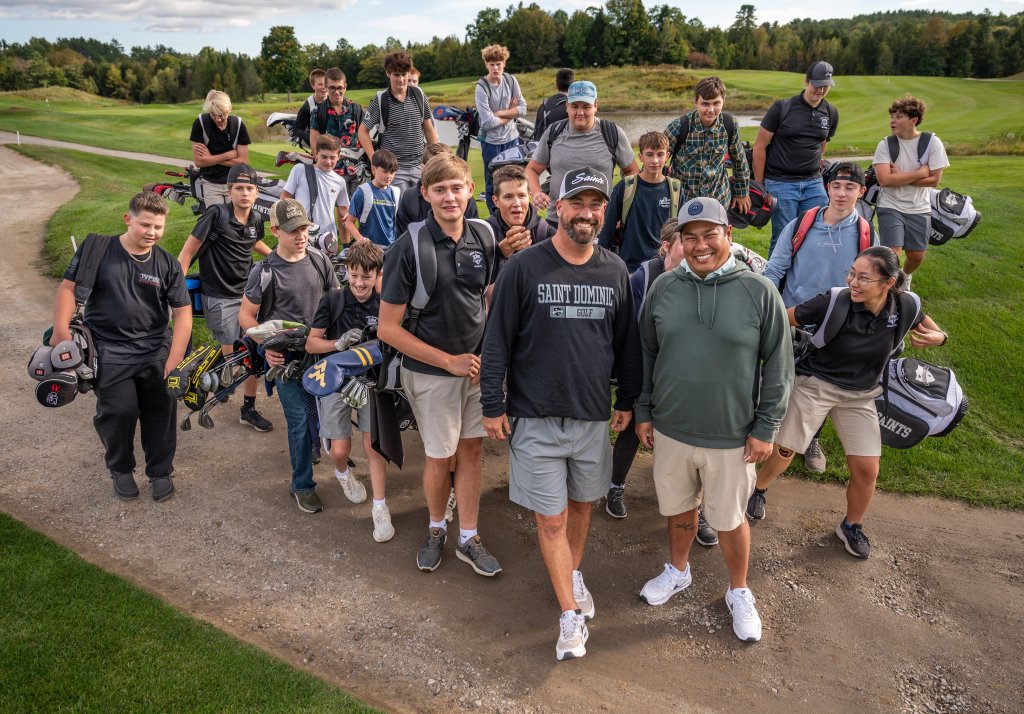
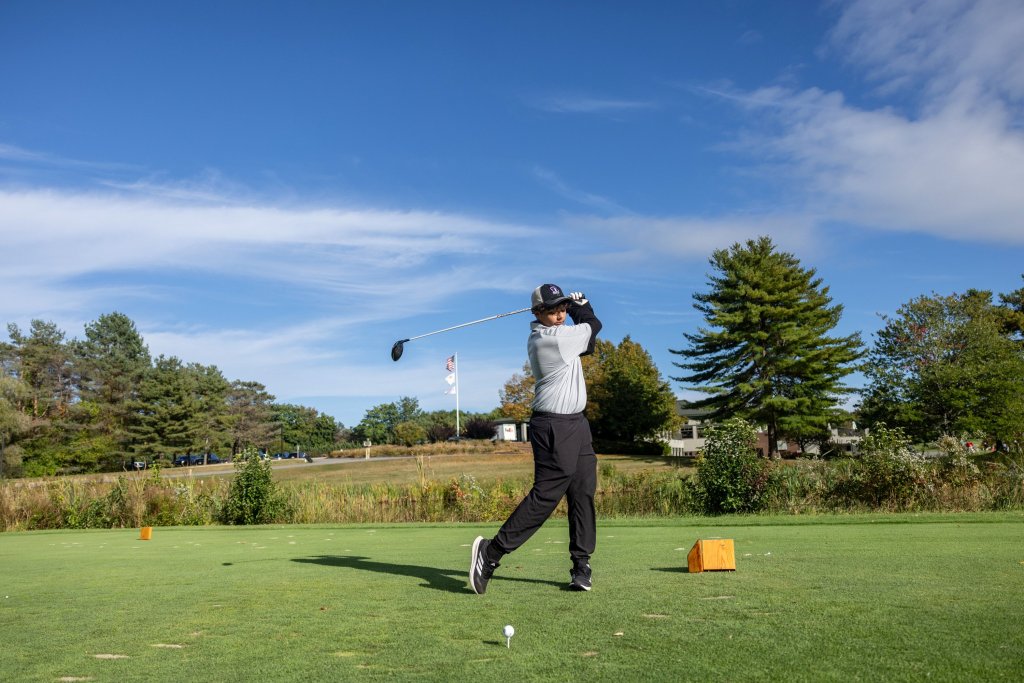
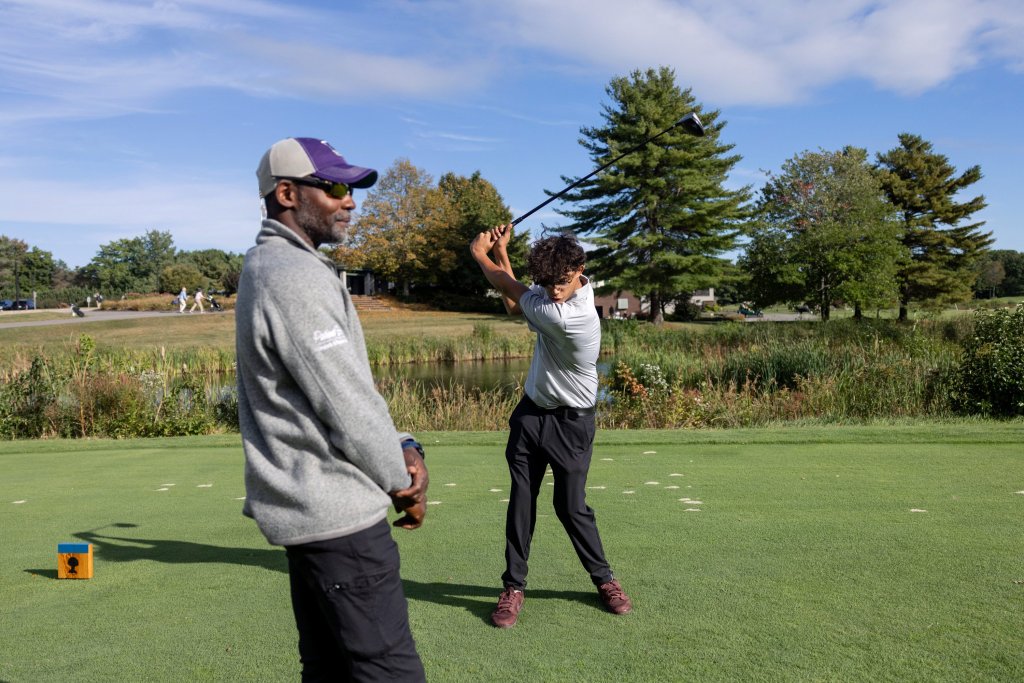
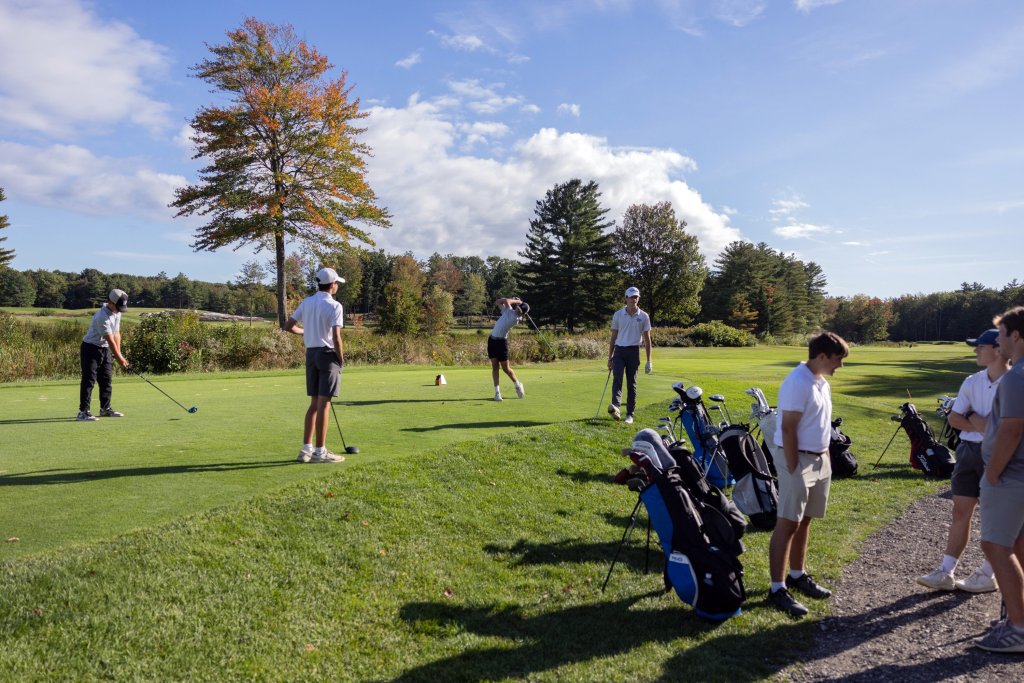
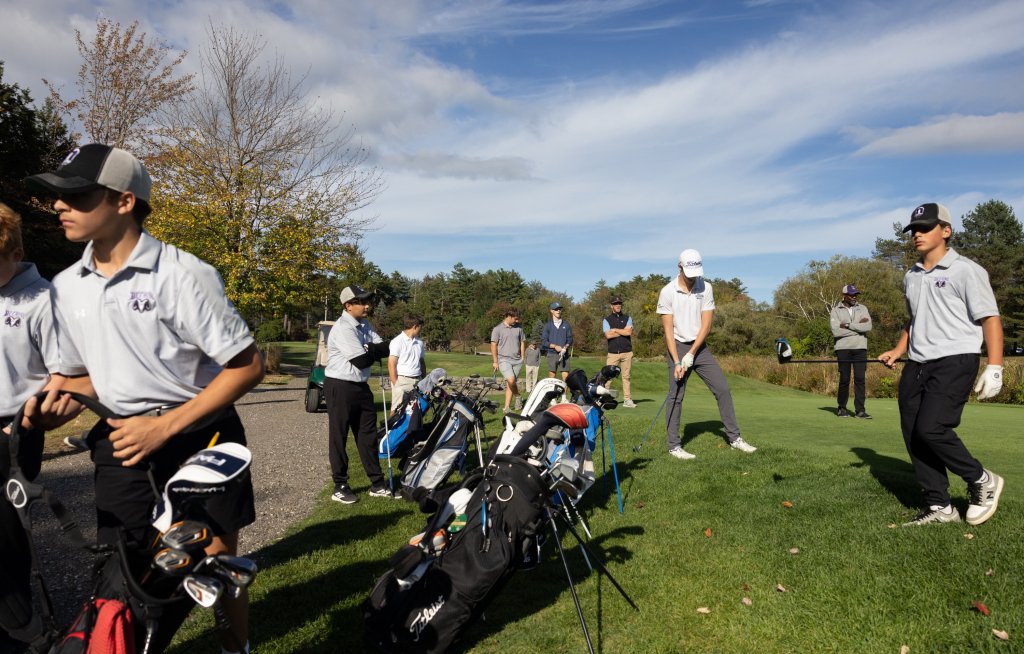
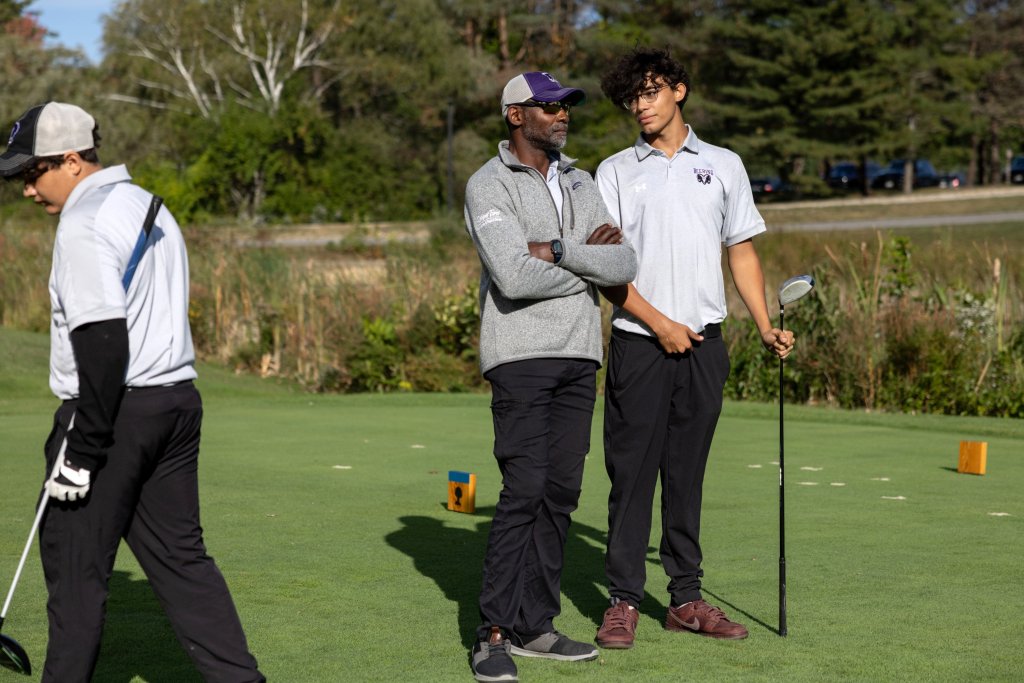
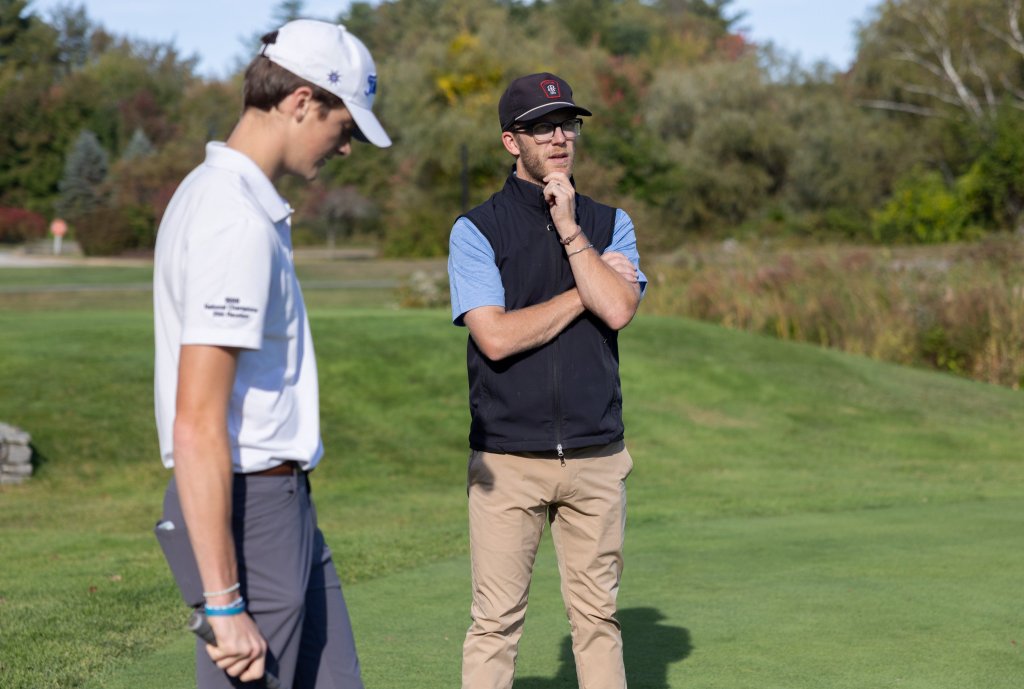
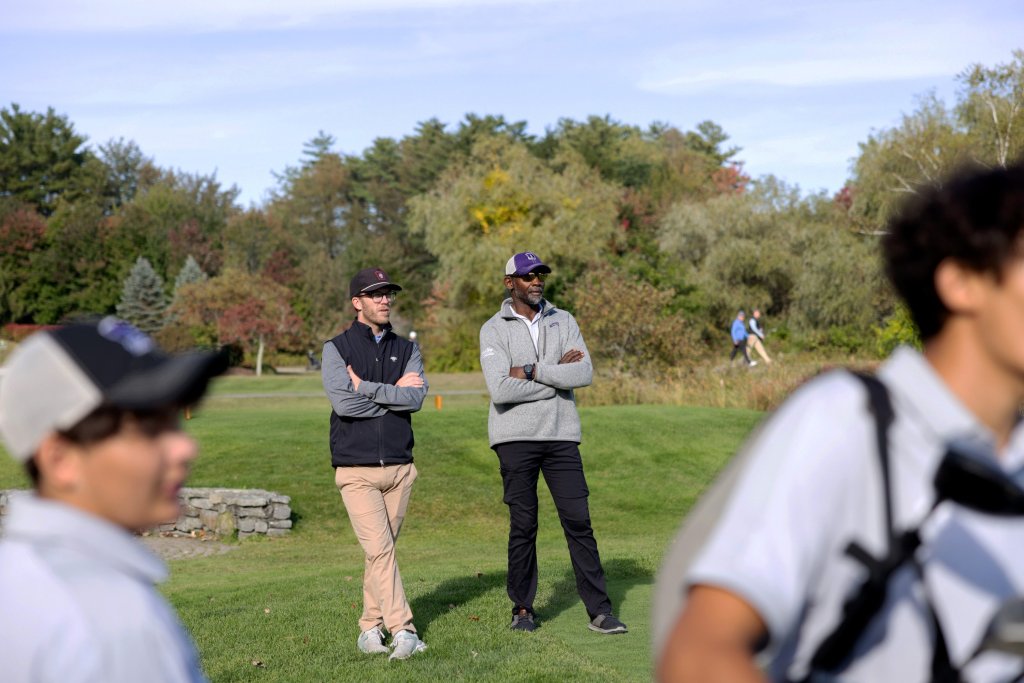
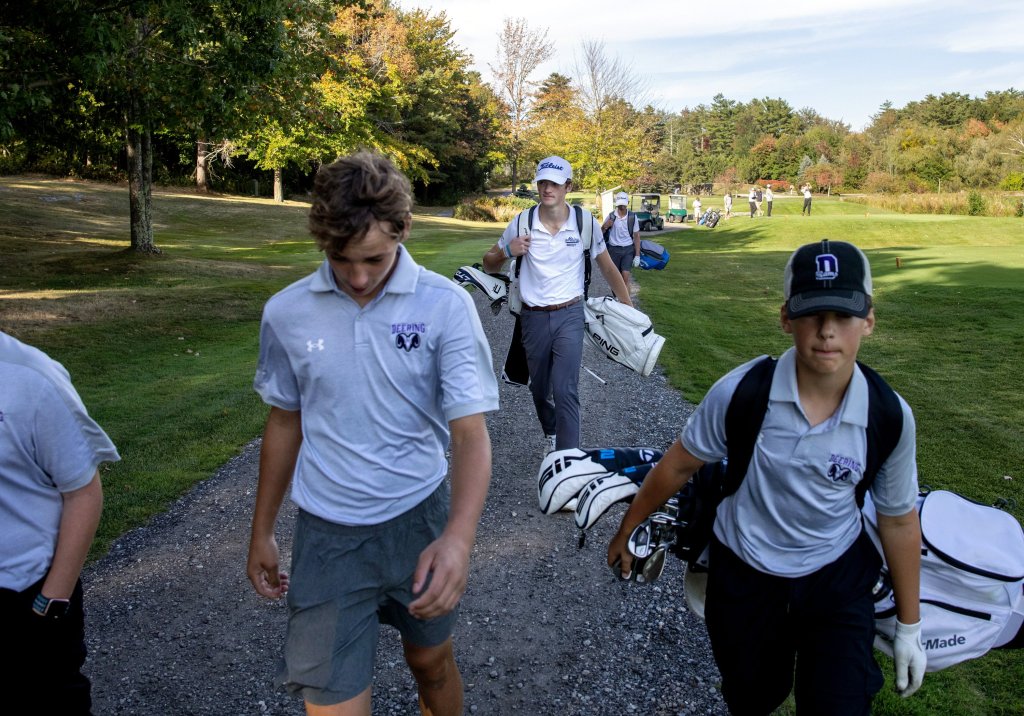
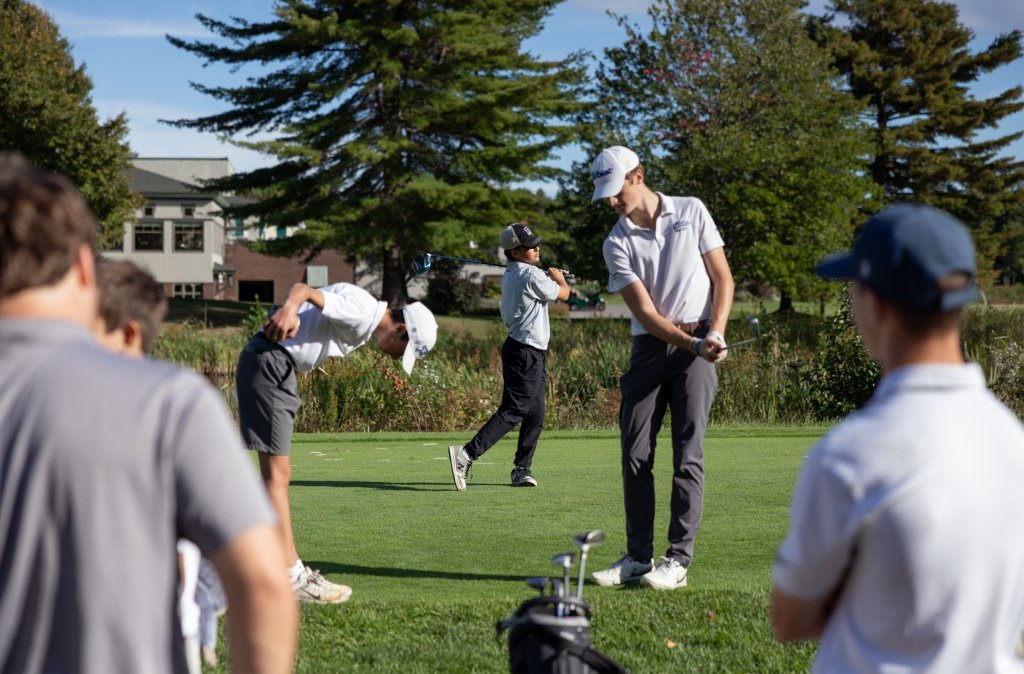
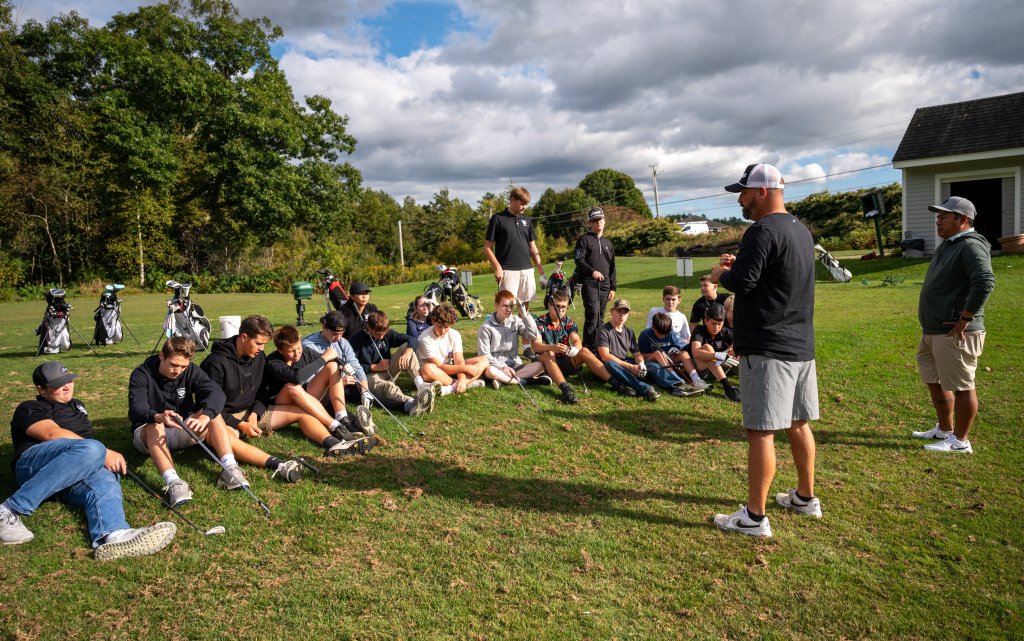
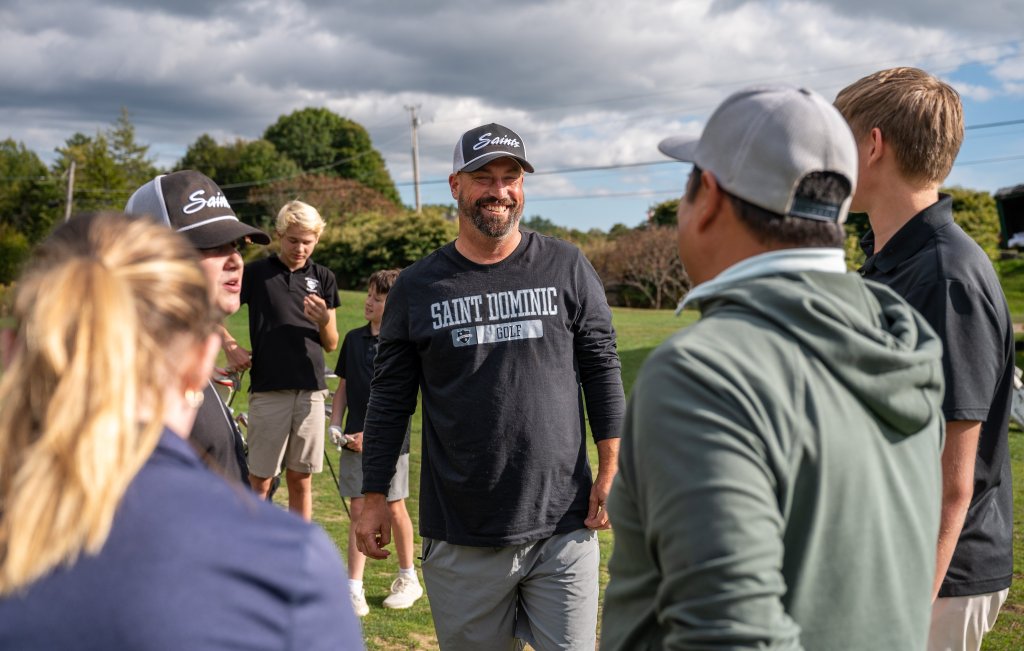
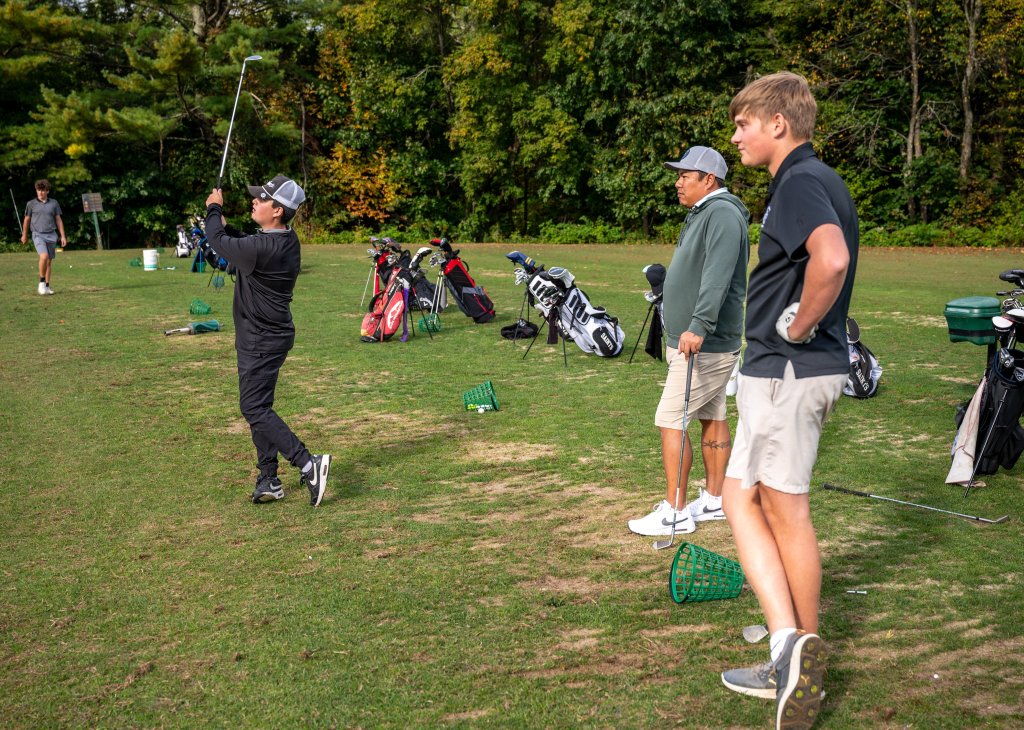
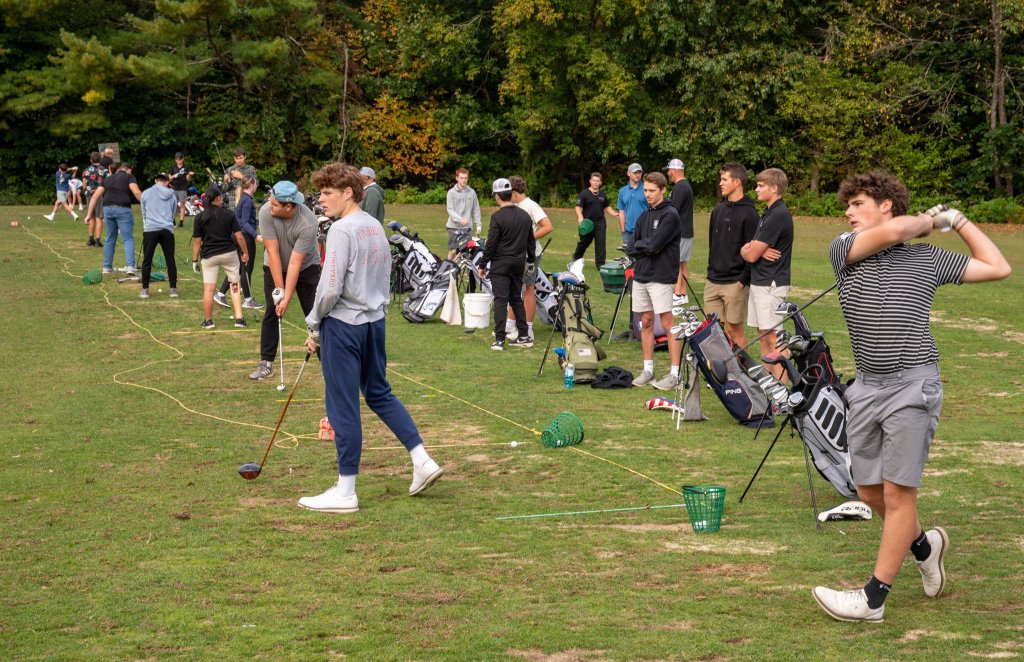

We invite you to add your comments. We encourage a thoughtful exchange of ideas and information on this website. By joining the conversation, you are agreeing to our commenting policy and terms of use. More information is found on our FAQs. You can modify your screen name here.
Comments are managed by our staff during regular business hours Monday through Friday as well as limited hours on Saturday and Sunday. Comments held for moderation outside of those hours may take longer to approve.
Join the Conversation
Please sign into your CentralMaine.com account to participate in conversations below. If you do not have an account, you can register or subscribe. Questions? Please see our FAQs.